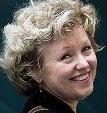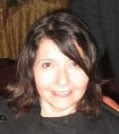
By Caitlin Rother
I’m just starting to teach an advanced feature writing course this summer at UCSD Extension (you can still join until next week), and will be teaching interviewing and an advanced narrative non-fiction course this fall, so I figured this would be a good opportunity to pass along some interviewing tips. You are all welcome to join my classes, and you might want to read this blog post to the end for some juicy stuff about my recent five-hour meeting with John Gardner at Corcoran State Prison.
So you have a true story to tell, and it isn’t about you. Where do you get the information you need? Well, you have to ask for it. The trick is knowing who and what to ask, how to get them to talk to you, and if you don’t know all that, how to figure it out. Then, of course, how to write it in a compelling way so people besides your mother will want to read it.
Depending on the subject, the type of story and where you want to publish it, basic questions – such as who, what, where and when – are important, but they don’t always suffice. Narrative non-fiction or literary journalism, where you write true stories using fiction techniques, also call for emotion, action and dialogue, descriptions of sights, sounds, textures and light. You must go deeper to build a plot and good characters.
Bottom line is that stories are about people – people acting, speaking, thinking and feeling.
For the more journalistic issue-oriented stories about politics, crime, the arts or your community, you want to find the key players and ask them what they think, go watch them in action and write down what they tell you. But interviewing isn’t all about the questions, it’s also about being an active listener. Sometimes, silence can make your subject open up. But you need to be well prepared to do the best interview, to ask probing, insightful and different questions than your competitors. If you impress your subject with your knowledge of him/her and the issue at hand, he or she will want to open up to you.
For profiles about interesting people, you want to look for what makes them tick, who they are, what they’ve done, what they’re passionate about, and what makes them unique. They might not even know these things – or want you to know – so it’s your job to help them tell you. To slowly peel away their layers and get to the truth.
If you do your homework and build trust with your subjects, you may be surprised at what intriguing tidbits and unexpected details you can pull out of them. I always like to hear that I’ve asked the right questions, because it tells me that I will be able to convey my subject's thoughts and feelings accurately, which in journalism and non-fiction, is very important.
Some authors of non-fiction put their opinions and beliefs into their books. In mine, I generally try to get out of the way of the story and tell it to the best of my ability, but as a neutral observer, a conduit of information. Obviously, I make choices about what to include and whose perspective I use to convey that information, (usually from a character’s point of view), but that doesn’t mean I believe what that person is saying. Most of the time I tell it straight because I think the reader will be able to tell when one of my characters, who are all real people, is lying. When they are lying, I often stick in a contrary point of view or fact from someone or somewhere else to show the opposing view, which helps the reader figure it out.
Interviewing a killer is tricky. I’ve done this a few times in my career, and twice recently for my books: Skylar Deleon, who is on death row for tying Tom and Jackie Hawks to the anchor of their yacht and throwing them overboard alive (DEAD RECKONING), and John Gardner, who admitted to raping and killing Chelsea King and Amber Dubois (THE MAKINGS OF A MONSTER).
I want to hear what they have to say, but I don’t want to confront them or make them angry because they will stop talking. The trick is to ask my questions in a way that makes them want to reveal telling statements to me, but also to let them talk about things they want to as I guide them toward subjects I want to hear.
In Gardner’s case, we had no glass wall between us, so I was more than a little conscious about my safety and also keeping him talking for the five hours we had until visiting hours were over – without seeing that same instant anger we all saw during his sentencing hearing. I knew I would only get one shot, so I waited until I had done all of my other interviews and all my research, and knew his life story backwards and forward. Sex offenders are manipulative, so I was ready for that. I also knew that he told different stories to different people, depending on the situation, so I was ready for that too.
I was surprised at how well the interview went. As I’d been told, he was very talkative and friendly and didn’t take much prodding to answer my questions. Now, the problem is an unusual one for me: I have to decide how much of what he told me to pass on to my readers, and how much, if anything, to leave out. It was all very compelling, but not for those with weak stomachs. I’d love to hear your thoughts how much you’d like to know.
Other than that, if I didn’t know what he’d done, I wouldn’t have guessed from his demeanor, the way he carried himself or the way he talked to me.
Lesson one: Killers often don’t look or sound like they do on TV.
Lesson two: Keep your eye on the ball and make sure you let them know, subtly, that you know who they really are, and when they're lying, so they don’t try to mess with you so much.
Lesson Three: Sometimes you get to know your subjects as well or better than they know themselves, and you can use that insight to help pull emotions and secrets out of them. To even help them discover something about themselves. Because that will be fresh and interesting for your readers.












0 comments:
Post a Comment